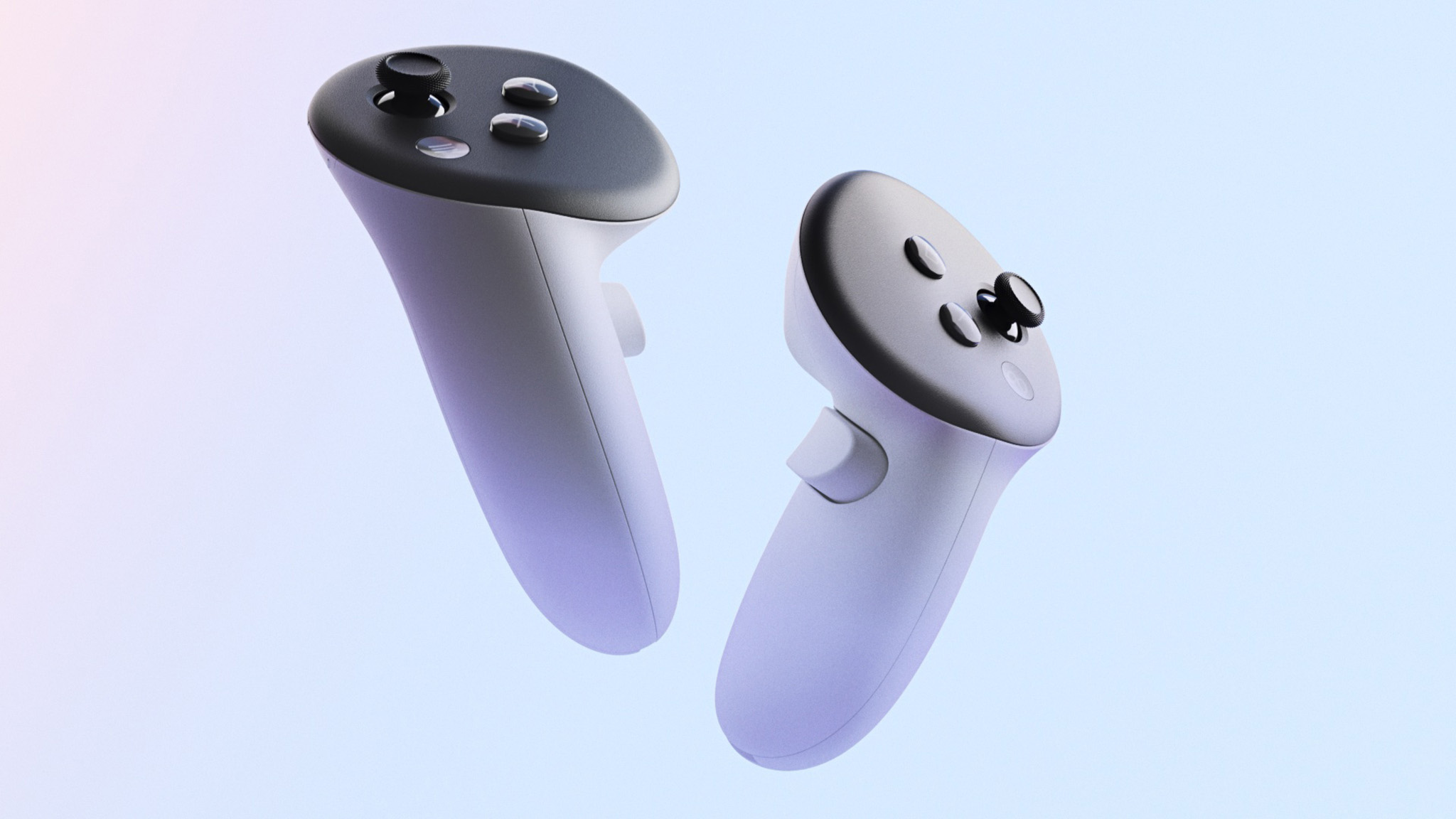This is the Meta Quest 3, the future of VR
40% slimmer, double the GPU power, higher-res displays, and more.

What you need to know
- Meta is launching the Quest 3 starting at $499 later this Fall.
- The headset boasts twice the graphics processing power, higher-resolution displays, and is 40% thinner than Quest 2 while being fully backward compatible with all Quest games.
- A new depth sensor enables better mixed-reality experiences, and full-color passthrough that's "almost lifelike" is better than ever.
- New redesigned controllers are smaller and include better TruTouch haptics.
It's been a long road, but the Meta Quest 3 has finally been unveiled by Meta CEO Mark Zuckerberg. Zuckerberg took to Instagram today to show it off for the first time and it's a huge upgrade over the Quest 2 headset.
Featuring a brand new processor that sports double the graphics processing performance and higher-resolution displays that the Quest 2, Meta says the Quest 3 is here to deliver clearer and sharper visuals, larger, more realistic worlds, and more immersive experiences than ever before. We'll be getting more details on the processor and the displays later in September at Meta Connect.
The headset design itself is sleeker and more unique looking than the Quest 2 with three pill-shaped areas up front which contain the tracking cameras, full-color passthrough cameras, and a new depth sensor. This is all done in a headset that's 40% thinner than the Quest 2.




Meta calls its new mixed-reality (MR) system "Meta Reality" and promises an easier setup with natural depth perception. That means you can play mixed reality games like Demeo on your table without a cumbersome setup.
Meta says the Quest 3 is the company's first mass-market offering that delivers cutting-edge VR and MR experiences in a single device. This is achieved thanks to those new color passthrough cameras which are 10x the pixel count as the ones in the Quest 2 and, of course, that new depth sensor that can automatically detect and map objects and rooms.
The new head strap design is still cloth but looks more comfortable and more easily adjustable than the Quest 2. New pancake lenses — which made their debut on the more expensive Quest Pro — are thinner and clearer than the Quest 2 and can be adjusted via an IPD adjustment wheel on the outside of the headset.
Meta says this is the company's first mass-market device that blends virtual reality and mixed reality into one headset.
When Meta drops the price of the Quest 2 next month, the company is releasing a new dynamic resolution feature that's said to improve Quest 2 performance by up to 26%. The Quest 3 will certainly be able to take advantage of this new feature and should further improve the gulf in performance between the Quest 2 and Quest 3.
Get the latest news from Android Central, your trusted companion in the world of Android
The Quest 3 is fully backward compatible with all Quest 2 games and is launching this Fall starting at $499.

The new Quest 3 Touch Plus controllers look a lot more like the Quest Pro controllers with one big difference: there are no cameras on these controllers. Plus, there's no tracking ring around the controllers like the Quest 2, either.
Meta hasn't released information detailing how these controllers are tracked but we can assume that there are LEDs situated around the controllers that the cameras can use to track. Since the Quest 3 also has a depth sensor, we're confident that Meta will also be using data from that sensor to further aid in tracking fidelity and accuracy. The Quest 3 also has bottom-facing cameras on each side, so it shouldn't be too different from how the Quest 2 does it.
But we do know a little bit about the new TruTouch haptics inside the Quest 3 controllers since those are the same haptics Meta is using in the Quest Pro controllers. These new haptics make feedback in VR feel more real and nuanced than ever, significantly improving the experience over the lower fidelity haptics in the Quest 2 controllers.
These new controllers are sleeker, smaller, and have better haptics than the Quest 2. Plus, hand tracking is improved thanks to the new depth sensor.
Meta says Quest Pro controllers can still be used on the Quest 3 and will provide a "more premium tracking experience" over even the new Quest 3 controllers, which means users who have already upgraded to Quest Pro controllers won't have done so for nothing.
Hand tracking on Quest 3 is supported out of the box so you can continue to play and use apps without controllers. The new depth sensor and higher-fidelity cameras should help make this experience much better than it is on Quest 2 today, as well.


